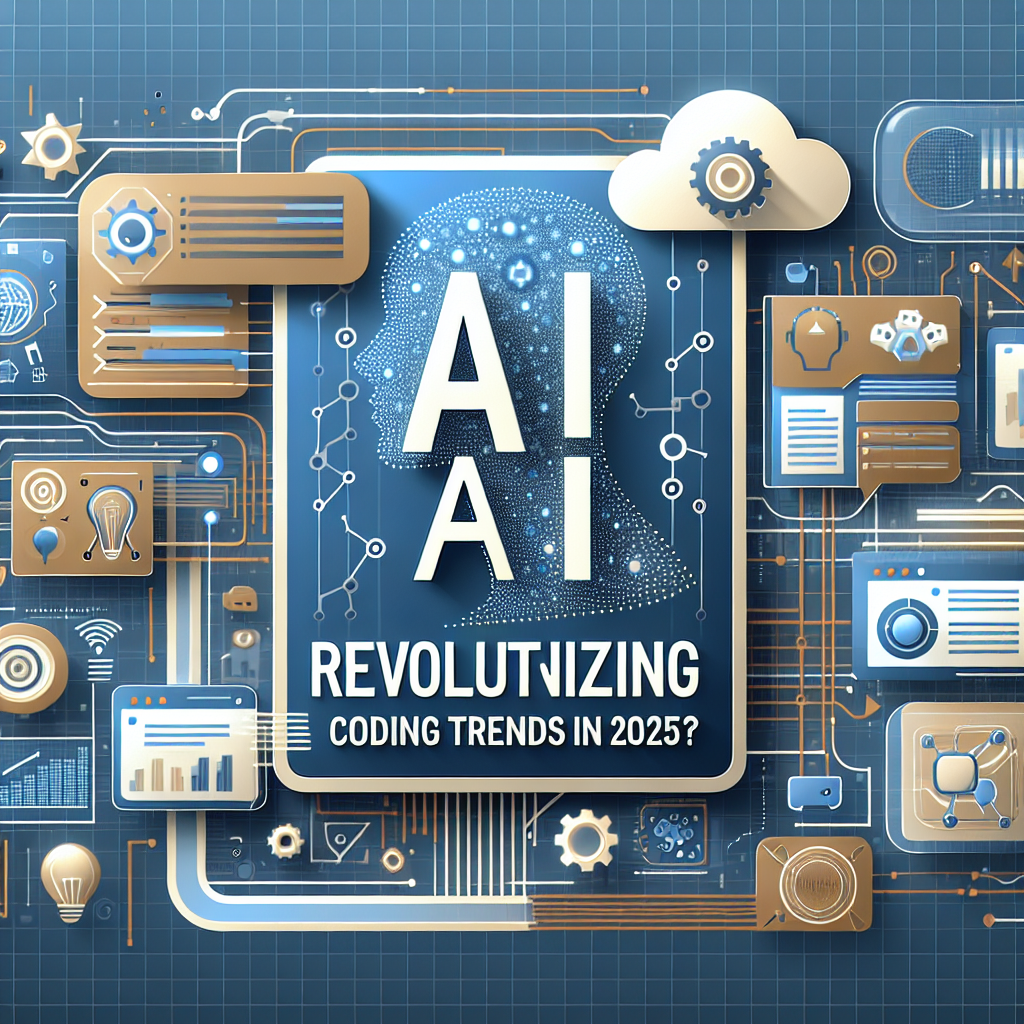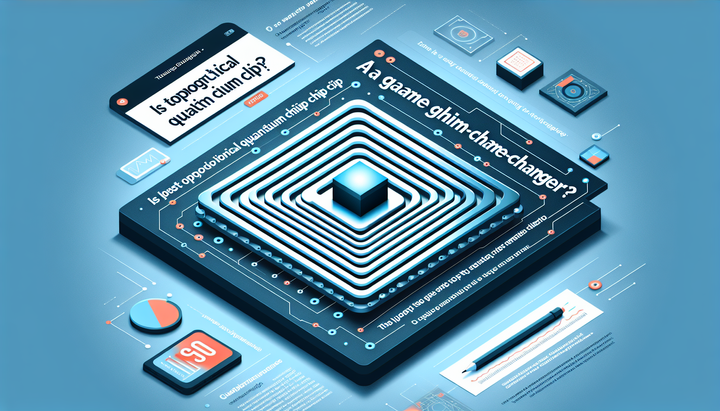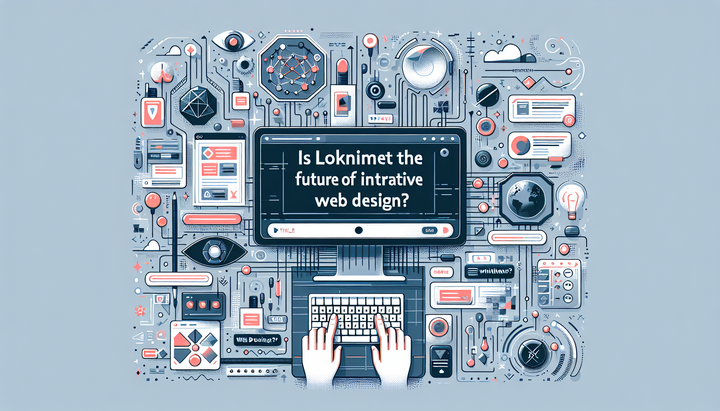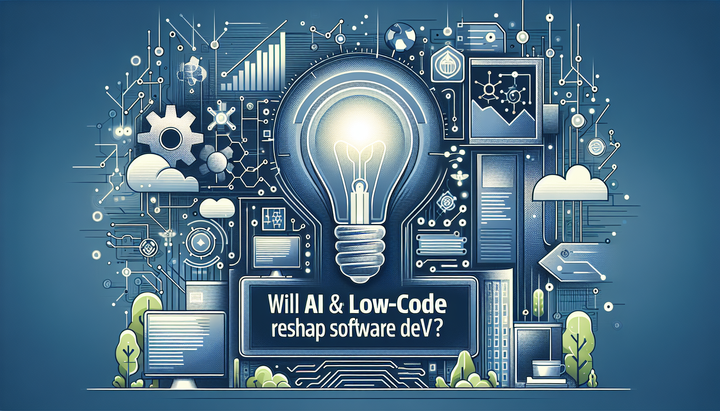Will AI-Driven Coding Redefine Software Dev?

Introduction: The Changing Landscape of Software Development
Today, the world of software development is transforming at breakneck speed. With emerging technologies and innovative approaches to coding, developers are constantly challenged to adapt and evolve. One of the most transformative trends is the integration of AI into the coding process. This article dives deep into how AI-driven coding is setting a new course for the software development lifecycle, spans discussions on new programming frameworks, and explores the rise of low-code/no-code platforms that promise to democratize app creation for everyone.
Emerging Programming Trends for the Modern Developer
The rapid evolution of technology has led to the appearance of several key trends in software development. Here are some of the most significant innovations that are shaping the future of programming today:
- AI-Driven Coding: Machine learning and artificial intelligence are now integrated with development environments to offer real-time code suggestions, automate debugging, and even generate code snippets. This helps reduce repetitive tasks, allowing developers to focus on more creative and complex problem-solving.
- New and Evolving Frameworks: From modern JavaScript frameworks like React and Vue to emerging languages that emphasize security and efficiency, developers have a plethora of choices. These frameworks are continuously updated to provide better performance, scalability, and integration with other technologies.
- Low-Code/No-Code Platforms: These platforms are rapidly gaining ground by enabling non-developers to build functional applications with minimal coding. This opens up new opportunities, bridging the gap between technical and business teams.
- Cloud-Native and Microservices Architectures: The shift towards cloud-based development has given rise to microservices that offer improved scalability, flexibility, and maintainability compared to monolithic systems.
- Enhanced DevOps and Automation: The integration of automated testing, continuous integration/continuous deployment (CI/CD) pipelines, and monitoring tools has revolutionized how software is built and maintained.
The Rise of AI in the Software Development Lifecycle
One of the most exciting trends is the rapid integration of AI into various stages of the software development lifecycle. Here’s how AI is making a significant impact:
Code Generation and Assistance
Modern development environments are equipped with AI-powered code assistants that can analyze code patterns and offer suggestions as you type. This not only speeds up the development process but also reduces errors by providing intelligent recommendations.
Automated Bug Detection and Debugging
AI technologies are being used to sift through complex codebases to identify bugs and security vulnerabilities. These tools learn from past errors and can predict potential issues before they cause significant problems, ensuring higher code quality and reliability.
Optimized Testing and Quality Assurance
AI-driven testing tools can generate test cases, simulate user interactions, and analyze performance metrics. This automated approach to quality assurance helps in minimizing human error and accelerates the process of achieving a high-quality product release.
New Frameworks and Tools Paving the Way
As the programming world pivots towards more efficient and secure coding practices, multiple frameworks and tools have emerged as front-runners in this evolution. Some of the standout frameworks include:
- Next-Generation JavaScript Frameworks: Frameworks like Svelte and Next.js are designed for high performance with minimal overhead, making them ideal for modern web applications.
- Type-Safe Programming Languages: Languages such as Rust and TypeScript have continued to gain traction due to their emphasis on safety and reduced runtime errors, boosting overall application stability.
- Integrated AI and ML Libraries: Python remains popular because of its comprehensive AI libraries like TensorFlow, PyTorch, and Scikit-Learn, which simplify the integration of AI into any project.
- Progressive Web App (PWA) Frameworks: As mobile and desktop experiences converge, frameworks that support PWAs ensure that developers can build cross-platform applications with a single codebase.
How Low-Code and No-Code are Democratizing Software Development
The emergence of low-code and no-code platforms is radically changing how applications are developed and deployed. With a visual approach to coding, these platforms enable individuals with limited technical skills to participate in the digital transformation. Here are some of the major benefits and features:
- Accelerated Development Cycles: By using drag-and-drop interfaces and pre-built components, developers can quickly prototype and deploy applications, shortening the time-to-market significantly.
- Enhanced Collaboration: These platforms foster better collaboration between developers and business stakeholders. With a shared, visual language, communication about requirements and design becomes more efficient.
- Cost Reduction: Lowering the barrier to entry for app development reduces costs associated with hiring specialists, promoting a more agile and lean development process.
Despite these advantages, traditional coding remains essential for complex projects that require customized solutions. Many organizations are choosing a hybrid approach, blending low-code platforms with custom software development to achieve optimal results.
Addressing Developer Challenges in a Rapidly Evolving Ecosystem
While emerging trends offer tremendous benefits, they also bring new challenges that developers must overcome. Rapid technological changes can lead to a skills gap, forcing developers to continuously update their knowledge base and adapt to new tools and frameworks. Here are several common challenges and strategies to overcome them:
- Keeping Up with New Technologies: To remain competitive, developers are expected to learn new programming languages, frameworks, and tools frequently. Continuous learning through online courses, workshops, and peer collaboration is essential.
- Integrating Legacy Systems: For many organizations, integrating modern approaches like AI-driven coding with older, legacy systems can be a daunting task. Developers need to bridge the gap between old technologies and new innovations without causing disruptions.
- Ensuring Security: With increased automation and AI integration, ensuring robust security protocols becomes even more vital. Developers must adopt secure coding practices and leverage AI for continuous vulnerability assessments.
- Balancing Speed and Quality: The pressure to deliver faster can sometimes compromise code quality. Implementing comprehensive testing frameworks and fostering a culture that prioritizes quality assurance can address this challenge.
Expert Insights and Industry Research
Leading experts predict that AI-driven tools will continue to evolve, further simplifying the coding process and boosting productivity. Here are some insights from industry thought leaders:
- Adapt and Evolve: Many experts emphasize the need for developers to embrace lifelong learning. Continuous adaptation is the key to thriving in a dynamic tech environment.
- Collaboration is Crucial: The future of software development lies in collaborative environments where human expertise and machine intelligence work in tandem to create superior solutions.
- Value of Hybrid Approaches: Combining traditional coding with AI and low-code platforms is seen as the most effective strategy for managing complex projects while maintaining innovation and speed.
Future Outlook: Preparing for a Transformed Software Landscape
As we look towards the future, it is clear that the integration of AI, new frameworks, and low-code platforms is not just a passing trend but a fundamental shift in how software is conceived, developed, and deployed. Here are some strategies for developers and organizations looking to stay ahead:
- Invest in Continuous Learning: Regular training and professional development can help teams keep pace with emerging technologies. Online courses, coding boot camps, and industry conferences are valuable resources.
- Build a Collaborative Culture: Encourage collaboration between teams to share insights, troubleshoot challenges, and develop innovative solutions that combine human creativity with machine efficiency.
- Experiment with New Tools: Embrace experimentation by piloting emerging platforms and technologies before they become mainstream. This early adoption can provide a competitive edge.
- Prioritize Security and Quality: As the development process becomes more automated, maintaining rigorous security measures and quality assurance protocols remains essential. Leverage AI to continuously monitor and improve your code’s integrity.
- Embrace Hybrid Development Models: Combining low-code platforms with custom coding solutions can offer the best of both worlds—speed and flexibility, alongside the robustness needed for complex tasks.
Case Studies: Real-World Successes in AI-Driven Coding
Several forward-thinking organizations have already reaped the benefits of adopting AI-driven coding practices. For instance:
- Tech Startup X: By incorporating AI-based code assistants into their workflow, Tech Startup X reduced development time by 30%, enabling rapid iteration without sacrificing quality.
- Enterprise Y: A multinational corporation revamped their legacy systems by integrating low-code solutions with traditional coding. This hybrid approach led to a more agile development cycle and improved system reliability.
- Innovator Z: An innovative software firm utilized AI-driven testing tools to automate quality assurance, thereby decreasing bug-related downtimes and elevating overall user satisfaction.
Conclusion: Is the Future of Coding Already Here?
The future of software development is being shaped by the rapid adoption of AI-driven coding, emerging frameworks, and low-code/no-code platforms. These technologies not only streamline the coding process but also empower developers to overcome traditional challenges associated with rapid innovation. As automation and intelligent systems become more deeply integrated into the development process, organizations must adapt by investing in continuous learning, embracing collaborative cultures, and experimenting with hybrid development models.
While the road ahead may be challenging, the benefits of increased efficiency, security, and innovation provide a compelling reason for developers and enterprises alike to reimagine how they approach software development. The evolution towards a more automated, AI-enhanced coding environment is not just a trend—it is a fundamental shift that will define the industry for years to come.
Are you ready to take the leap into this new era of coding? By staying informed about these trending technologies and continuously adapting your skillset, you can not only survive but thrive in the rapidly evolving landscape of software development.



Comments ()